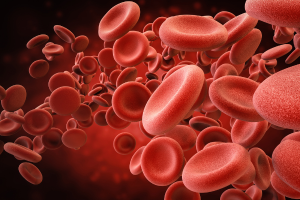ITP, or Idiopathic Thrombocytopenic Purpura, is a petechial and purpuric rash with a low platelet count. While some children with ITP may experience mild symptoms, others may suffer from severe bleeding problems, although it is extremely rare. The exact cause of ITP is not known, but it is believed to be triggered by a viral illness.

DEFINITION:
A petechial and purpuric rash with a low platelet count on a blood test
SYMPTOMS:
Usually starts with typical cold symptoms are followed about two weeks later by petechiae or purpuric rash. This rash does not blanch; in other words, it does not disappear when the skin is pulled taut on either side of the rash.
CAUSES:
It is unknown, but it is thought to be a reaction to a virus.
CONTAGION:
This is not contagious from person to person.
DIAGNOSIS:
The diagnosis is made by the clinical symptoms of the rash in a healthy-appearing child and a low platelet count on a blood test.
TREATMENT:
Mostly, the illness will resolve spontaneously. However, intravenous immunoglobulin (IVIG) and steroids can be used.
OUTCOME:
Excellent in most cases. Because of the low platelet count, there can be bleeding in the brain, but this is extremely rare.
DISCUSSION:
A child will usually go to their physician because of the rash. The child will typically appear well. The history is generally consistent with cold symptoms about two weeks prior and the rash’s sudden appearance. The physical examination is normal other than the rash. Because of the petechiae and purpura, a complete blood count is usually checked. The platelet count will be low. Petechiae are small red pinpoint spots on the body that do not blanch. In other words, they do not disappear when the skin is pulled taut on either side of the spot. Purpura are larger red spots that also do not blanch.
The normal platelet count is generally greater than 150,000 units, but it can decrease to fewer than 10,000 units in Idiopathic Thrombocytopenic Purpura. A count of fewer than 50,000 units is of enough concern to keep a close watch on the level. Fewer than 20,000 units usually prompt treatment because of the concern of bleeding. Once a child gets this illness, there is a high probability that it will recur in the future.
ONE DOCTOR’S OPINION:
When a child comes in with petechiae, there is always a concern about meningitis because this rash can manifest that more serious illness. However, the concerns are usually alleviated quickly since the child looks so well with Idiopathic Thrombocytopenic Purpura. It is always important to check the platelet counts to see how low they are. Different physicians will have different opinions on how to treat this condition. Some prefer to do nothing and let the illness resolve on its own.
Others will provide treatment only after a bone marrow test is done to look for more serious illnesses, such as leukemia, which can also present with petechiae and purpura. I will treat without doing a bone marrow if the child looks good and the basic lab tests and blood smears are normal except for the low platelet count. I use steroids if the platelet count is between 20,000 and 50,000 units and check the platelets daily until they show a rise. Under 20,000 units, I will usually be admitted to the hospital for intravenous immunoglobulin therapy. Removing the spleen can be curative in children who get multiple recurrences of this illness, although this is rarely necessary, as most cases will resolve with no treatment.
This blog was written by Dr. Michael Bornstein, who has 30 years of experience as a pediatrician.
Disclaimer: The contents of this article, including text and images, are for informational purposes only and do not constitute a medical service. Always seek the advice of a physician or other qualified health professional for medical advice, diagnosis, and treatment.


FOLLOW US